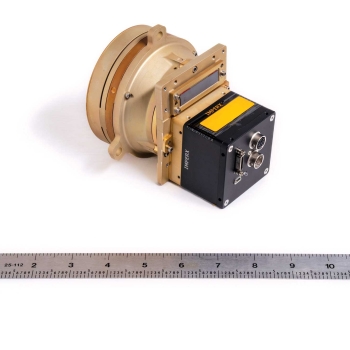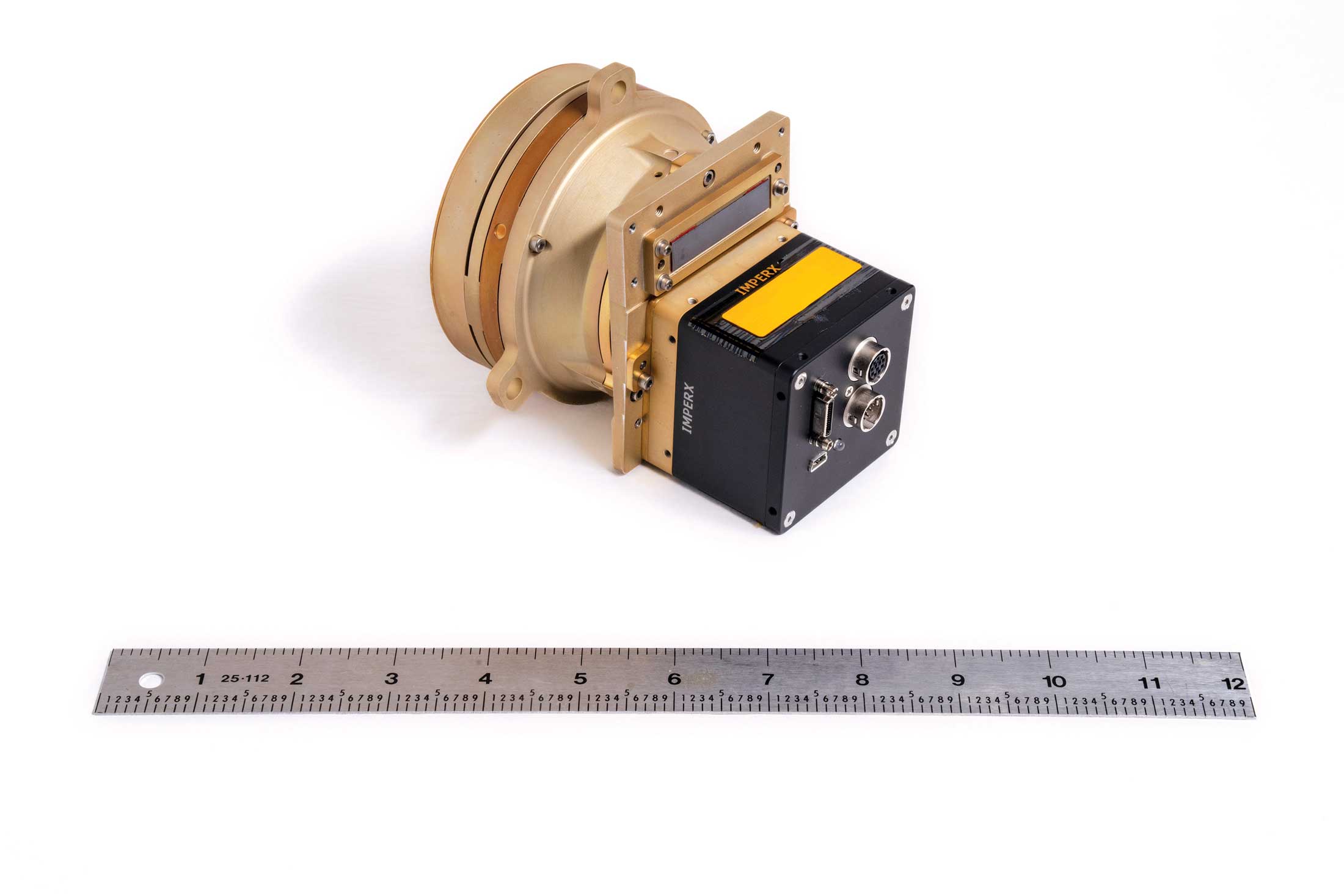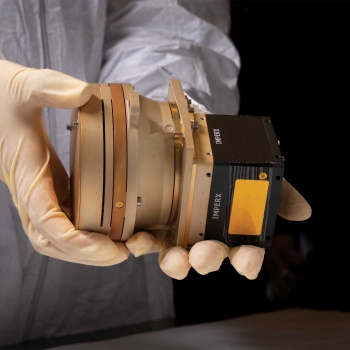Chrisp Compact VNIR/SWIR Imaging Spectrometer (CCVIS)

MIT Lincoln Laboratory, in collaboration with NASA, developed an imaging spectrometer that maintains state-of-the-art optical and signal-to-noise performance in a unit that has a volume ten times smaller than that of other spectrometer designs. Coupled with a freeform telescope, the spectrometer can acquire spectral imagery over a wide area, enabling remote monitoring for atmospheric science, geology, and agriculture.

While high-performing, state-of-the-art imaging spectrometers have reached near-perfect aberration control and high signal-to-noise ratios (SNRs), the CCVIS maintains optimal performance in a package that has reduced size, weight, and power (SWaP).
Advantages of the Chrisp Compact VNIR/SWIR Imaging Spectrometer (CCVIS)
- CCVIS is rugged and suitable for use as a payload on small satellites and airborne systems, including uncrewed aerial vehicles (UAVs).
- The CCVIS can be implemented as modules that, when coupled with a freeform telescope, may offer fields of view as large as 40 degrees or more.
- Local control of optical surfaces during design enables the highest degree of aberration control necessary for a spectrometer system capable of imaging over very wide fields of view. This control is enabled by Fast Accurate NURBS optimization code, which employs nonuniform rational basis-spline (NURBS) optical surfaces.
- The CCVIS flat grating is easier and faster to manufacture than the convex or concave gratings of other high-performing imaging spectrometers. The flat grating with dual-angle facets exploits grayscale lithography to produce 3D microstructures.
Benefits
- Compact optical form employs a doublet lens with a reflective back surface and a flat immersed grating to minimize volume and simplify optical alignment
- Grating facets optimize the optical efficiency and signal-to-noise ratio
- Optical form supports >3,000 spatial samples and the 380−2500 nm (VNIR/SWIR) spectral range
- Integrated on a small satellite or aircraft, the spectrometer can provide aerial imagery useful for planetary exploration, climate monitoring, or deforestation tracking
Additional Resources
U.S. Patent 9,689,744
More Information
M.P. Chrisp et al., "Development of a Compact Imaging Spectrometer Form for the Solar Reflective Spectral Region," Applied Optics, 59 (32), 10 Nov. 2020.
